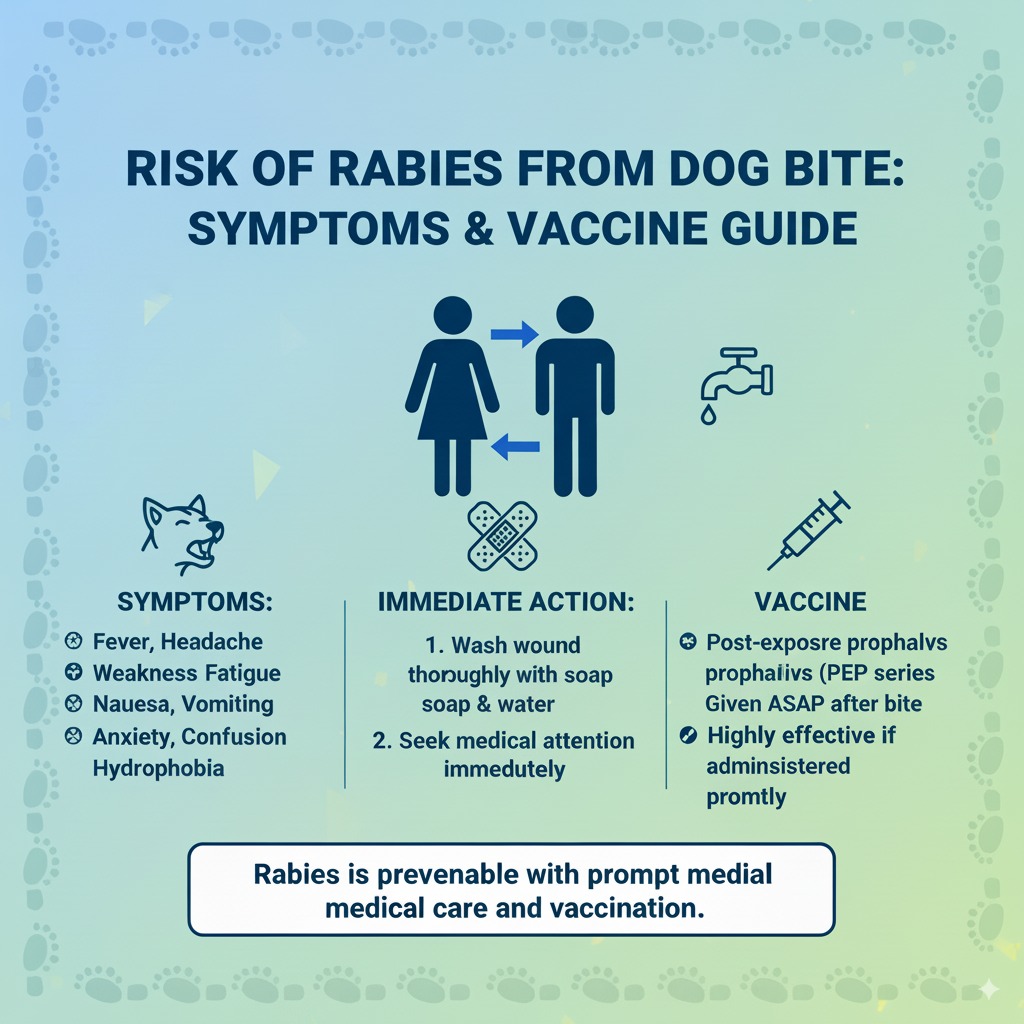Risk of Rabies from Dog Bite

Dog bites are common, but the real concern is the risk of rabies from dog bite. Rabies is a deadly viral infection that affects the nervous system, making awareness of rabies symptoms, first aid after bite, and proper rabies vaccine administration crucial for safety.
Understanding the Risk of Rabies from Dog Bite
Rabies is usually transmitted through the saliva of an infected dog. Not all dog bites carry rabies risk, but factors include:
-
Bite from a stray or unvaccinated dog
-
Deep or multiple bites
-
Delay in treatment after the bite
Being aware of the risk of rabies from dog bite ensures timely action and prevents severe consequences.
Immediate First Aid After a Dog Bite
Proper first aid after bite can reduce infection risk:
-
Wash the wound thoroughly with soap and running water for at least 15 minutes
-
Apply antiseptic solution
-
Seek medical attention immediately for evaluation
-
Document the dog’s vaccination status, if possible
Early care is crucial to prevent rabies infection and other bacterial infections.
Recognizing Rabies Symptoms
Understanding rabies symptoms helps in early detection. Common signs include:
-
Fever and headache
-
Muscle weakness and fatigue
-
Tingling or itching around the bite
-
Anxiety, confusion, or agitation
-
Difficulty swallowing and hydrophobia
Immediate medical care is essential if symptoms appear, as rabies is almost always fatal once symptoms develop.
Post-Exposure Prophylaxis (PEP) and Rabies Vaccine
The rabies vaccine is the cornerstone of prevention after exposure. Steps include:
-
Receiving post-exposure prophylaxis (PEP) promptly
-
Following the complete vaccination schedule as prescribed
-
Administering rabies immunoglobulin in severe cases
Timely rabies vaccine and PEP can completely prevent rabies, even after a high-risk bite.
Consult a Doctor for Rabies Guidance
After any dog bite, consult a healthcare professional immediately. Our experts at Chirayu Polyclinic provide guidance on first aid after bite, rabies vaccination, and follow-up care. Learn more about our doctors here.
Conclusion
Understanding the risk of rabies from dog bite, administering first aid after bite, recognizing rabies symptoms, and receiving timely post-exposure prophylaxis are vital steps for prevention. Never delay seeking medical attention—rabies is preventable with prompt care.

